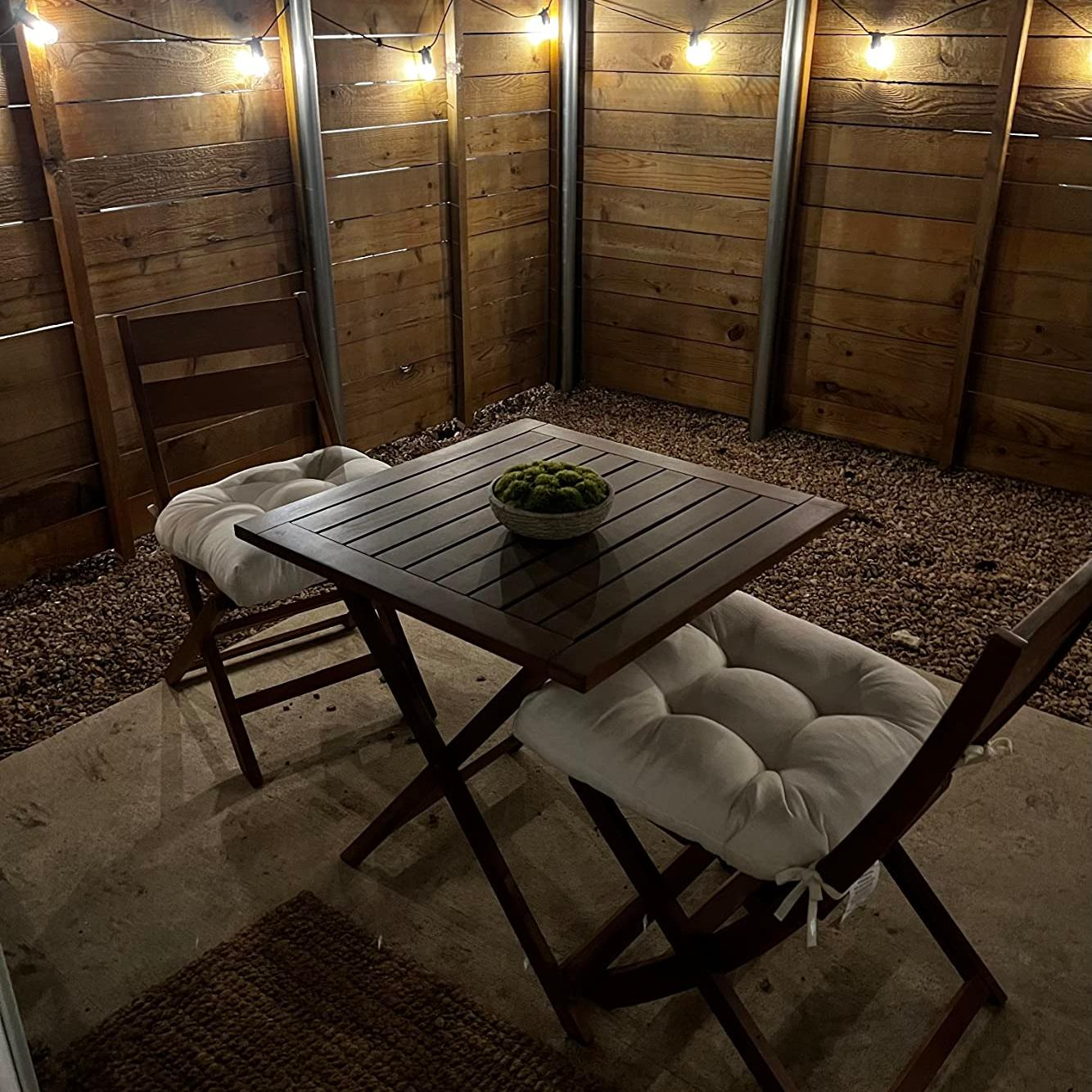String lights have become an essential element in modern outdoor and indoor decor, offering a charming and versatile way to light up any space. Whether you’re looking to illuminate your patio, garden, or commercial venue, string lights provide a warm and inviting ambiance. Behind the scenes, these lights are crafted with precision in string light factories. In this article, we will take an in-depth look at string light manufacturing, including the process, types of lights produced, and what to look for when choosing a string light factory for bulk orders.
What is a String Lights Factory?
A string lights factory is a production facility specializing in the design, manufacturing, and assembly of string lights. These factories use various materials and techniques to create a wide range of string lights, including LED string lights, Edison bulb lights, fairy lights, and solar-powered options. A well-established string lights factory ensures that its products meet safety standards, offer durability, and provide energy-efficient lighting solutions for both residential and commercial customers.
Types of String Lights Manufactured in a Factory
String light factories produce various types of lights to suit different needs and preferences. Below are some of the most popular types:
1. LED String Lights
LED string lights are the most popular option due to their energy efficiency, long lifespan, and bright, consistent light output. These lights are made with tiny LED bulbs, which are much more durable and energy-efficient than traditional incandescent bulbs. LED string lights are available in various colors and designs, making them suitable for various occasions, from casual backyard parties to sophisticated outdoor events.
2. Edison Bulb String Lights
Edison bulb string lights are known for their vintage, industrial look. These string lights feature exposed filament bulbs that give off a warm, amber glow. Edison bulbs are often used in both indoor and outdoor settings to create a cozy, inviting atmosphere. String light factories typically produce Edison bulbs in various shapes and sizes, including globe and tear-drop designs.
3. Fairy Lights
Fairy lights, also known as twinkle lights, are small, delicate LED lights often used to create a magical, whimsical atmosphere. These lights are commonly used in events, holidays, or to decorate trees, shrubs, and other outdoor structures. String light factories often manufacture fairy lights with thin, flexible wires, allowing for easy wrapping around objects.
4. Solar-Powered String Lights
Solar-powered string lights are eco-friendly, energy-saving lights that operate without the need for electrical outlets. They come with solar panels that charge during the day and automatically light up at night. These lights are perfect for garden pathways, patios, or areas where it’s difficult to access power. String light factories specialize in producing solar lights that are durable and weather-resistant.
5. Battery-Operated String Lights
For those looking for flexibility without relying on electrical outlets, battery-operated string lights are an ideal solution. These lights can be installed anywhere, making them a popular choice for temporary decorations or areas where wiring isn’t an option. Factories that manufacture battery-operated string lights ensure that the batteries are long-lasting and that the lights offer bright, consistent illumination.
6. Commercial-Grade String Lights
Commercial-grade string lights are designed for large venues such as restaurants, event spaces, and other commercial properties. These lights are made with high-quality materials to withstand frequent use and adverse weather conditions. A string lights factory producing commercial-grade options focuses on durability, reliability, and energy efficiency to meet the needs of business owners.
String Lights Manufacturing Process
The manufacturing process of string lights typically involves the following steps:
1. Design and Prototyping
The first stage of production begins with the design of the string lights. The factory works closely with designers and engineers to create prototypes based on market trends and customer requirements. Prototypes help to evaluate the look, functionality, and durability of the lights before mass production begins.
2. Material Selection
String light manufacturers select high-quality materials for the construction of the lights. This includes durable wires, weather-resistant casings, and long-lasting LED bulbs. For Edison-style bulbs, the factory selects clear or frosted glass and filament materials. If the string lights are solar-powered, factories use high-efficiency solar cells and rechargeable batteries.
3. Assembly Line Production
Once the materials have been sourced, string lights are assembled on a production line. This typically involves the following stages:
- Wiring: The wires are cut to length and prepared for connection.
- Bulb Fitting: The bulbs are attached to the wiring, ensuring they are spaced appropriately and securely fixed.
- Quality Control: Each string light is tested to ensure it works properly and meets safety standards.
4. Packaging
Once the lights pass inspection, they are packaged carefully for shipment. The packaging protects the lights from damage during transportation and often includes instructions on installation and maintenance. String light factories often offer customized packaging for businesses or bulk orders, which can help enhance brand visibility.
5. Shipping and Distribution
After packaging, the finished string lights are prepared for shipment to retailers, wholesalers, or directly to consumers. String light factories typically have strong distribution networks to ensure products are delivered promptly and safely.
Choosing the Right String Lights Factory for Bulk Orders
When sourcing string lights in bulk, it’s essential to choose a reliable factory that can deliver quality products on time. Here are some key factors to consider:
1. Quality Standards
Ensure the factory adheres to high-quality standards and offers certified products. Look for factories that comply with international standards such as CE, UL, and RoHS certifications, which indicate that the products are safe and environmentally friendly.
2. Customization Options
If you’re ordering string lights for a specific event or need custom branding for your business, check if the factory offers customization options. Many manufacturers provide custom bulb colors, wiring lengths, and packaging solutions.
3. Production Capacity
For bulk orders, it’s important to select a factory with sufficient production capacity. The factory should be able to handle large orders while maintaining consistent product quality. Ensure they can meet your deadlines and offer flexible order quantities.
4. Pricing and Minimum Order Quantity (MOQ)
Pricing is a critical factor, especially for large-scale purchases. Request detailed quotes from several factories to compare prices. Additionally, check the factory’s minimum order quantity (MOQ) and ensure it aligns with your needs.
5. Customer Service and Support
A factory that offers excellent customer service will make the ordering process smoother. Choose a factory that provides reliable communication, quick responses to queries, and post-purchase support, especially if you experience issues with the product.
6. Environmental Sustainability
If sustainability is important to your business, opt for factories that focus on eco-friendly manufacturing practices. Solar-powered string lights, LED technology, and recyclable packaging are signs of a factory committed to sustainability.
Frequently Asked Questions (FAQ)
1. How long do string lights last?
The lifespan of string lights depends on the type of bulb used. LED string lights can last up to 50,000 hours, while incandescent or Edison bulbs have a shorter lifespan of around 1,000 to 2,000 hours.
2. Can I use string lights outdoors in all weather?
Yes, many string lights, especially LED and commercial-grade options, are designed for outdoor use and are weather-resistant. However, always check the product specifications for an IP rating to ensure the lights can withstand rain, snow, and other harsh weather conditions.
3. How do I maintain string lights?
To maintain string lights, regularly check for damaged bulbs or wires. Clean the bulbs gently with a soft cloth to remove dust and dirt. For outdoor lights, ensure they are securely fastened and not exposed to extreme weather conditions for extended periods.
4. Are there any safety concerns with string lights?
As with any electrical product, it’s essential to follow the manufacturer’s instructions. Avoid overloading circuits and ensure that outdoor string lights are plugged into outlets with proper grounding. Always turn off the lights when they are not in use.
5. How do I choose the best string lights for my needs?
Consider the purpose and location when choosing string lights. For outdoor use, LED or solar-powered lights are ideal. For a vintage look, Edison bulb lights work well. Additionally, assess factors such as weather resistance, energy efficiency, and the desired lighting effect.
String lights have the power to transform any space, adding a warm, inviting glow that enhances the atmosphere. The manufacturing process behind these lights is intricate, involving various stages such as design, material selection, and assembly. Whether you’re looking for LED string lights for a patio, solar-powered lights for a garden, or commercial-grade string lights for an event, choosing the right string lights factory is essential. By considering quality, pricing, customization, and customer service, you can find a reliable factory that meets your needs for bulk orders.



 NO 8 Building,Yanluo Street,
NO 8 Building,Yanluo Street,